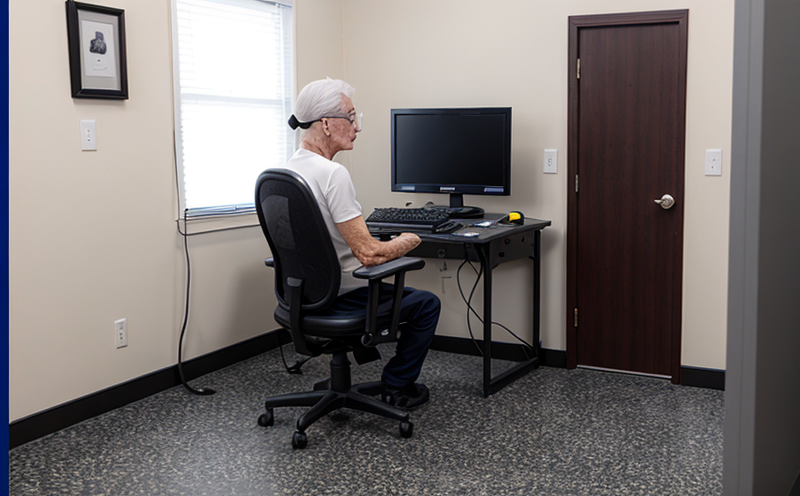JIS L1096 Abrasion resistance testing of textiles
The JIS L1096 abrasion resistance test is a crucial procedure in textile quality assurance, designed to evaluate the durability and wear resistance of fabrics. This test simulates real-world conditions where textiles are exposed to frictional forces over time, such as in clothing, upholstery, or industrial materials.
This standardized method aims to quantify the extent to which fabric specimens lose their integrity due to mechanical abrasion under controlled laboratory conditions. The JIS L1096 test is widely recognized for its rigorous approach and relevance across various industries including fashion, automotive, furniture manufacturing, and technical textiles. The procedure involves a reciprocating cylinder that rubs against the specimen, simulating the rubbing action encountered during wear.
The abrasion resistance of materials plays a critical role in ensuring longevity and performance under real-world conditions. For example, fabrics used in high-friction applications such as seat covers for automobiles or conveyor belts must withstand significant abrasive forces without degrading. Understanding the abrasion resistance characteristics helps manufacturers optimize material selection, improve product design, and enhance user satisfaction.
The test procedure is detailed in JIS L1096, which specifies the dimensions of the specimen to be tested, the weight of the cylinder used for rubbing, the stroke length, and the number of cycles required. Compliance with these parameters ensures that the results are accurate and comparable across different laboratories. The apparatus typically consists of a testing machine equipped with a reciprocating cylinder and a load cell to measure the force applied.
Specimen preparation is an essential part of this test, as it directly influences the outcome. Specimens must be cut according to specified dimensions and weights, ensuring uniformity across samples. The fabric should be conditioned in a humidity-controlled environment before testing to simulate real-world conditions. This step is crucial because environmental factors such as temperature and humidity can affect the material's properties.
The abrasion resistance of textiles is influenced by several key parameters including fiber type, weave structure, yarn count, and finishing treatments. For instance, fabrics composed of synthetic fibers like polyester or nylon tend to exhibit higher abrasion resistance compared to natural fibers such as cotton or wool. The weave pattern also plays a significant role; tighter weaves generally provide better protection against wear.
The results from the JIS L1096 test are typically reported in terms of mass loss, which indicates the amount of fabric that has been lost due to abrasion over the specified number of cycles. This metric provides valuable insights into the durability of the material and can be used for quality control purposes or as a basis for product development decisions.
Understanding the limitations of this test is important when interpreting results. Factors such as environmental conditions, testing speed, and cylinder pressure can influence the outcome. Therefore, it's essential to adhere strictly to the prescribed method to ensure reliable data.
- Test Parameters: Specimen dimensions, cylinder weight, stroke length, number of cycles.
- Specimen Preparation: Conditioning in a humidity-controlled environment.
- Data Reporting: Mass loss due to abrasion over specified cycles.
Industry Applications
The JIS L1096 abrasion resistance test finds application in numerous industries where the durability and wear performance of textiles are critical. In automotive interiors, for example, seat covers must withstand frequent abrasion from body movement and cleaning activities without losing their appearance or functionality.
Similar considerations apply to industrial fabrics used in conveyor belts, which must endure constant friction and pressure while maintaining strength and integrity. The test is also relevant in the fashion industry, where it helps ensure that clothing items will withstand the rigors of daily wear and washing. Additionally, upholstery materials for furniture require abrasion resistance to maintain their aesthetic appeal and comfort over time.
For technical textiles, such as those used in outdoor gear or protective clothing, abrasion resistance is a key factor in determining the product's suitability for rugged use conditions. The test results can guide manufacturers in selecting appropriate materials and optimizing design features to meet specific performance requirements.
In summary, the JIS L1096 abrasion resistance test provides valuable data that supports informed decision-making across various sectors by offering a standardized method to assess textile durability under simulated real-world conditions.
Eurolab Advantages
At Eurolab, we pride ourselves on providing comprehensive and accurate abrasion resistance testing services that meet the highest industry standards. Our expertise in textile testing ensures that our clients receive reliable results every time.
We employ state-of-the-art equipment to conduct JIS L1096 tests with precision and repeatability. Our laboratories are equipped with advanced instrumentation, including high-precision load cells and automated test machines, ensuring consistent performance across all specimens tested.
Our team of experienced technicians is thoroughly trained in the latest testing methodologies, allowing us to provide accurate interpretations of results based on international standards like JIS L1096. This ensures that our clients can trust the data they receive from us for making informed decisions about their textile products.
We offer a range of additional services beyond basic abrasion resistance testing, including colorfastness tests and shrinkage measurements, which complement the information provided by JIS L1096. These supplementary tests help manufacturers ensure that their materials not only meet abrasion resistance requirements but also maintain other important quality attributes throughout product development cycles.
Our commitment to excellence extends beyond just technical expertise; we also focus on delivering exceptional customer service. From initial consultation through final report delivery, our goal is to provide a seamless experience for all our clients. We understand that every business has unique needs and strive to tailor our services accordingly while maintaining the highest level of quality.





